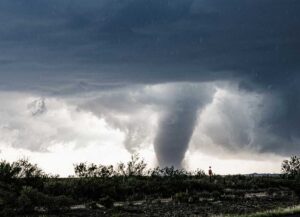WASHINGTON — After falling early in 2023, recent statistics from the U.S. Department of Labor show trucking jobs increases over the past few months.
While early statistics indicated that during March the truck driving industry added more than 6,000 new jobs, the labor department revised those numbers down to more than 3,000.
April numbers show a gain of 3,000 jobs, to a total of 1,612,500 jobs in the trucking industry.
Many of these positions were filled by trained CDL drivers, but the experience level of the new job force is questionable.
As the push to hire new drivers continues, Congress is considering numerous pieces of legislation that will, either as a primary purpose or secondary effect, open the industry to a broader range of drivers.
The tax incentives package recently proposed by Rep. Abigail Spanberger (D-Virginia) and co-sponsor Rep. Mike Gallagher (R-Wisconsin) is but one example. But with all the good that increasing job opportunities may offer the trucking industry and its stakeholders, safety concerns naturally rise.
According to Barrett Young, head of fleet safety for Netradyne, stakeholders recognize the impact of softening the driver shortage will have on the U.S. economy.
“The driver shortage has been an ongoing issue for some time,” said Barrett Young, head of fleet safety for Netradyne. “It’s exciting to see some action being taken to help curb the challenge many companies are feeling. As a nation, we will feel a positive impact on our supply chain if we can truly help more drivers enter the industry.”
Stakeholders recognize the impact of alleviating the driver shortage will have on the nation’s economy, Young noted.
“One important point, with more new drivers, it will require more training and safety measures to be in place,” he said, adding that, if done correctly, it will “not only fix the shortage but improve safety on our roads.”
Young called for an element of legislation to include improvements to existing safety guidance so new drivers can utilize the benefits of video safety systems to continuously coach and improve driving skills.
At the same time, he says, the old ways of improving fleet safety and driver performance are “perfectly suited to a world that no longer exists” — in other words, fleet owners must take advantage of modern technology to keep pace with other industries.
He calls for measures including advanced artificial intelligence video telematics, citing as an example Netradyne’s Driver system.
“(This) is the only system that can recognize positive driving so fleet managers and new drivers can see the entire picture and take the proper actions to make each driver a top performer,” Barrett said.
Barrett emphasized that he is in favor of legislation that will increase the number of drivers on the road.
“New incentives and (bringing) new drivers into the industry is great,” he said. “Let’s just make sure we are not sacrificing road safety in the process.”
Since retiring from a career as an outdoor recreation professional from the State of Arkansas, Kris Rutherford has worked as a freelance writer and, with his wife, owns and publishes a small Northeast Texas newspaper, The Roxton Progress. Kris has worked as a ghostwriter and editor and has authored seven books of his own. He became interested in the trucking industry as a child in the 1970s when his family traveled the interstates twice a year between their home in Maine and their native Texas. He has been a classic country music enthusiast since the age of nine when he developed a special interest in trucking songs.









There wouldn’t be a Driver Shortage if Trucking Companies would STOP BLACKLISTING their DRIVERS, for firing their Drivers over petty ass disagreements!
I think driving in the wee hours of the morning is causing more accidents. the air is different as is the vision of the driver, and it makes them sleepy. I know loads have to be delivered. Maybe keeping the windows closed would help, perhaps special glasses. Surely enough rest/sleep would help too.